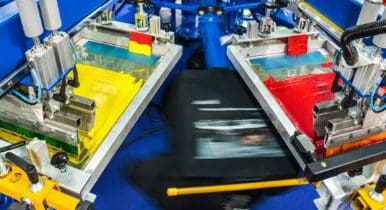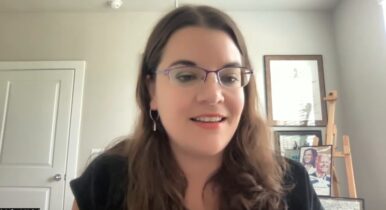Balancing the Art of Merch and Digital Campaigning

Tim Sullivan didn’t have any formal training in design before he was given the opportunity to own the merch store on Colorado Sen. Michael Bennet’s reelect this cycle. It wasn’t his only responsibility.
In fact, Sullivan’s title was deputy digital director.
But his ability to use programs like Adobe Illustrator and collaborate on designs with the senator himself, gave the Democratic incumbent’s campaign a secret weapon: merch that actually sold.
C&E: Tell us how you started your career.
Sullivan: I was a political science major in college and thought I wanted to be a journalist, but then I got an internship at the South Carolina Democratic Party and I stuck there for just about three and a half years. At times doing communications, and then doing their digital work. I ran the merch store there, but it was not a very big part of what we did. It was logos on shirts and stuff like that. Then about a year ago, I moved out to Denver, Colo., and joined up about five months ago with the Bennet campaign.
C&E: Talk about the campaign’s merch design process.
Sullivan: The process was really interesting. Sen. Bennet got really involved in the merch at one point. He wanted to create a series of items that were based on his book, The Land of Flickering Lights, and inspired by this really cool book of ’70s campaign posters that had. He got very hands-on and I worked with him to design this line of four-five different designs that were originally for posters and he loved them and we put them on shirts and [sweatshirts]. It was a really fun process to actually work with the principal that was really invested in this bit of merch.
C&E: So you were coming up with designs and then running them by the senator?
Sullivan: He sent me these screenshots from the book of these kind of retro posters that he liked, and passages from his book that he wanted to work with. There’s this chapter where he outlines these basic, philosophical freedoms that he believes all Americans should have, and he wanted to incorporate Colorado and education — all these different things he cares about. It was a little bit of a challenge to take written words, very philosophical political stuff and translate it into a poster. My favorite one is a construction papery-looking scene of a sunrise over the mountains with a passage from the book underneath it. We went through a few rounds of it, until we got it exactly where he wanted it to be.
I think they came out pretty cool. It started just as posters, but by the end of the process, I think we were at something like 40-50 different items across the whole merch store that had this stuff on it. It went on shirts and sweatshirts and mugs, baby onesies, and tote bags. It was on everything we could put it on. That kind of really meaningful, purposeful campaign merch is something that people responded to really well.
C&E: What was the item that sold the best?
Sullivan: I haven’t looked through the metrics in a while, but I’d say it was the “Freedom To Rise” poster and all of the “Freedom To Rise” items with that design on it. As well as the “Freedom To Govern” [poster].
An article mentioned [that our opponent] was drinking a big handful of ice in his beer and we made rapid response koozies that say, “There’s no ice in this beer,” with the Bennet for Colorado logo under it. And that was another really fun way to use the merch store. I really enjoy it when the place we sell t-shirts can become part of the larger campaign.
C&E: What’s the key to good merch?
Sullivan: It’s something that’s really purposeful and goes beyond just a slogan or a logo — that can really work well to engage people. It can be a poster they can hang up and look back on, however many years from now, and see what the ideals were that we represented.
C&E: Looking back, do you think it’s better to have a dedicated person for design versus someone who has a larger portfolio but is also in charge of things like merch?
Sullivan: Best case is to have someone that can do both because you can have a creative minded-person that is also able to see how their designs and their work interacts with the larger program. That will make both sides better.
If you have a big enough team, if someone says something snappy in a debate, you can make something pretty quickly. But that person might have other responsibilities during the day. I think we’ve got really good systems for it with the on-demand model that a lot of campaigns use. It can be a really fun part for people.
I really enjoy balancing it because I love the less creative-based work that I do, too: fundraising and organizing and putting together a holistic program. I don’t know if I could do a purely design job. I love doing that work, but you look at the same shades of blue for too long and you start to go a little crazy.



